Why I love... Classic Game Magazines
- decapvada
- May 6, 2024
- 8 min read
Updated: May 11, 2024

I’m a complete nostalgia freak and I can freely admit that it is a dangerous interest. Classic games, movies, music, comics, books, toys, and of course, old magazines, I love it all. There's something about holding something from the past, a little piece of your former self. With a magazine, you can read and be transported back to how you felt at that time. Video game magazines, specifically, were something I and many gamers of a young age spent reading over and over again as we couldn't afford to buy games as often as an adult. In fact, we'd likely get 2-3 games a year on birthdays and Christmas and that was it.
I wouldn't be surprised if I spent as much time reading about games as I did playing them. Drooling over screenshots, reading move lists, cheat guides, getting exicted for what was coming up in the release schedule. I did, it turns out, quite like reading other people's opinions too and as you read further issues of the same magazine you got to know the regular contributers, their tastes, their styles, their humour. There was this attitude in 90s magazines that made kids like me feel like part of a gang. In those days video games were not as mainstream as they are now, dare I say even cool. But video game magazines in the 90s made video games seem cool, and I loved them for it.
So let me talk you through a few of my favourites from over the years.
Gamesmaster:
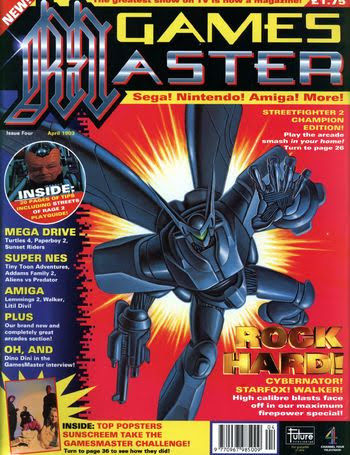
The first choice for a lot of children of the 90s in the United Kingdom, Gamesmaster was the tie-in magazine for the hit show of the same name. I remember seeing issue 2 in my local newsagent stand and was amazed at how much the front cover stood out with its painted, dark and moody art (the Chaos Engine). The style and visual quality was years ahead of everything else on the stands, money well spent apparently as due to being a tie-in it had a much larger budget than many of its publisher's sister mags. I remember issue 4’s cover of Cybernator, while not an actual image from the game, looked incredible. I might have bought the mag just for art if it were not for the Games Master brand. Thank Discworld artist and painter Paul Kidby for that.
Originally edited by Jim Douglas, I thoroughly enjoyed the juvenile attempts at being edgy and cool. As with the many magazines created at Future Publishing, the staff writers there contributed to each magazine and the tone was always that of a group of people having a laugh and you the reader, always felt like you were in on the in-joke.
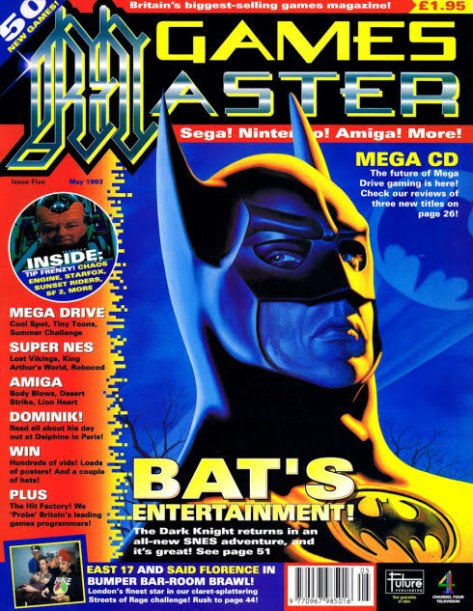
They were also quite honest, but perhaps scoring Sonic 2 so low in issue 1 was an attempt to source controversy. Reviewer Andy Low stands by it still. Speaking of honesty, I guess that all ended with their Mortal Kombat 3 coup? Not until Maximum and Tekken 2 or C&VG with Tekken 3 did a magazine give so much coverage to one game. As an avid arcade goer at the time, it was quite exciting for me as there was a new character, new screenshots, and new interviews each month. The hype for the game reached unfathomable levels.
The staff’s love of Street Fighter 2 was never lost on me either, being such a fanboy myself I loved reading the constant coverage. I read and reread their maximum difficulty guide for Street Fighter 2 on the SNES. Some of those strategies I still use to this day, such as vertical jumping to keep Zangief at bay.
With varying articles including regular spots with Dominic Diamond, forcing celebrities to play whatever game was hot at the time in an embarrassing way (just like the show!) and tips galore, the first thirty issues are a great read for a 90s retro-fiend. As was the norm in those days, the writers at Gamesmaster published many a scathing review and their Aliens versus Predator stub on the Super Nintendo was especially hilarious!
Computer and Video Games:
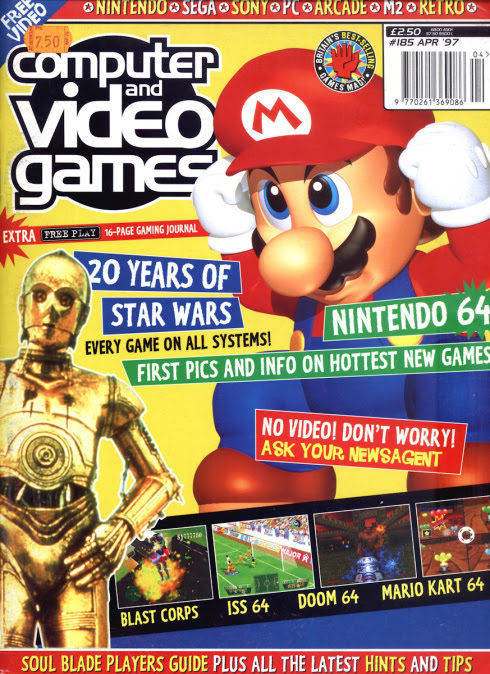
I never cared much for Computer and Video games until Paul Davies took over the (then) ailing magazine in the mid-nineties. For the few years leading to this moment, CVG was a dull, boring and very corporate-looking magazine and lacked the character and playfulness of its best competitors. What it transformed into, however, was anything but.
With the refresh, CVG became so popular at the time, so important, that supposedly certain game developers were scared of their passionate and brutally honest reviews. The High-Five scoring system was a revelation to me, as let's be honest, what really is the difference between a game scoring 72% and 75%? The idea (taken from Japanese arcade magazines supposedly) to include a pull-away section for fighting game move lists and cheats was also brilliant. I can still remember clutching my Virtua Fighter 3 guide the second time around I played the machine in Southend’s arcades. The magazine's coverage of arcade games also ignited insane excitement and jealousy within me, as they showed Street Fighter 3 and Marvel Vs Capcom long before they were released. Again, not many British publications cared for 2D fighting games in those days. If you weren't Tekken or Virtua, you either were ignored or given average scores for not being modern enough.
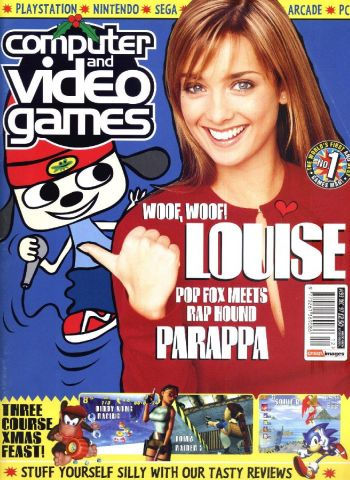
The mag's main goal was to be passionate and excited about video games, and this mentality was infectious. This specific era of the mag covered the majority of the 32-bit generation up until the Dreamcast and it was a thrilling time with many, many games getting 3D updates and transformations. Furthermore, CVG covered games that were not getting the media attention of more mainstream (official) press. Did any other magazine dare to give Castlevania: Symphony of the Night such a blinding review at the time? I can’t think of many. The now highly revered classic was scathed in most publications for being 2D. Impossible to think in this day and age.
My love for the Sega Saturn was also born in this magazine (see my article). Throughout this generation, I hopped from SNES to Playstation to Nintendo64 and never owned Sega's 32-bit machine. Despite being the least popular console of the generation, CVG raved about its best games passionately, leading to my purchase of the console years later. Reading about Dungeon Keeper and its sequel also influenced me to buy a PC, and the classic series remains one of my all-timers.
So I guess to end this entry I should thank this fine magazine and yell 'Long live the spirit of the mad gamer!'
Mean Machines Sega:
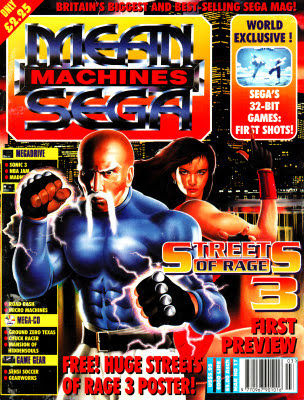
Mean Machines Sega was born from the split of Mean Machines, a magazine dedicated to the booming console market during the latter days of the dwindling dominance of the home computer. I always really liked the use of caricatures to represent the reviewers, something that would be copied by many other publications. This was the best exclusive Sega magazine for the 16-bit generation, and there were plenty of those.
Sega Saturn Magazine:

Any self-respecting Sega Saturn owner must know of this great magazine. Although the sleights towards over consoles I personally do not welcome, it was a well-written and grown-up magazine with incredibly in-depth features (perhaps because of the lack of a games library compared to the shovel-ware of the PS1?)
Now, as a born-again Sega Saturn owner, I’ve bought many of the issues. A must!
Maximum:
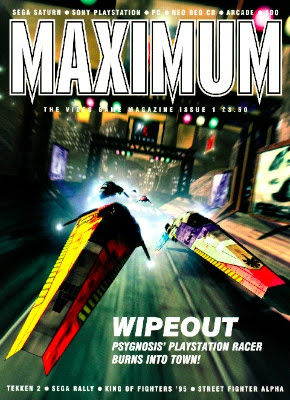
Another endeavour of Richard Leadbetter, editor of Sega Saturn Magazine, Maximum was an interesting and short-lived publication that differed from the rest of the market. Page layouts were unique and the general sorting order was reversed as it placed reviews at the front of the magazine. With a mature tone like Edge and the passion of Paul Davis-era CVG, Maximum was a truly great read with incredibly in-depth features. It's such a shame it never found its audience and the only issue I bought physically at the time was the final issue, no.7
Super Play:
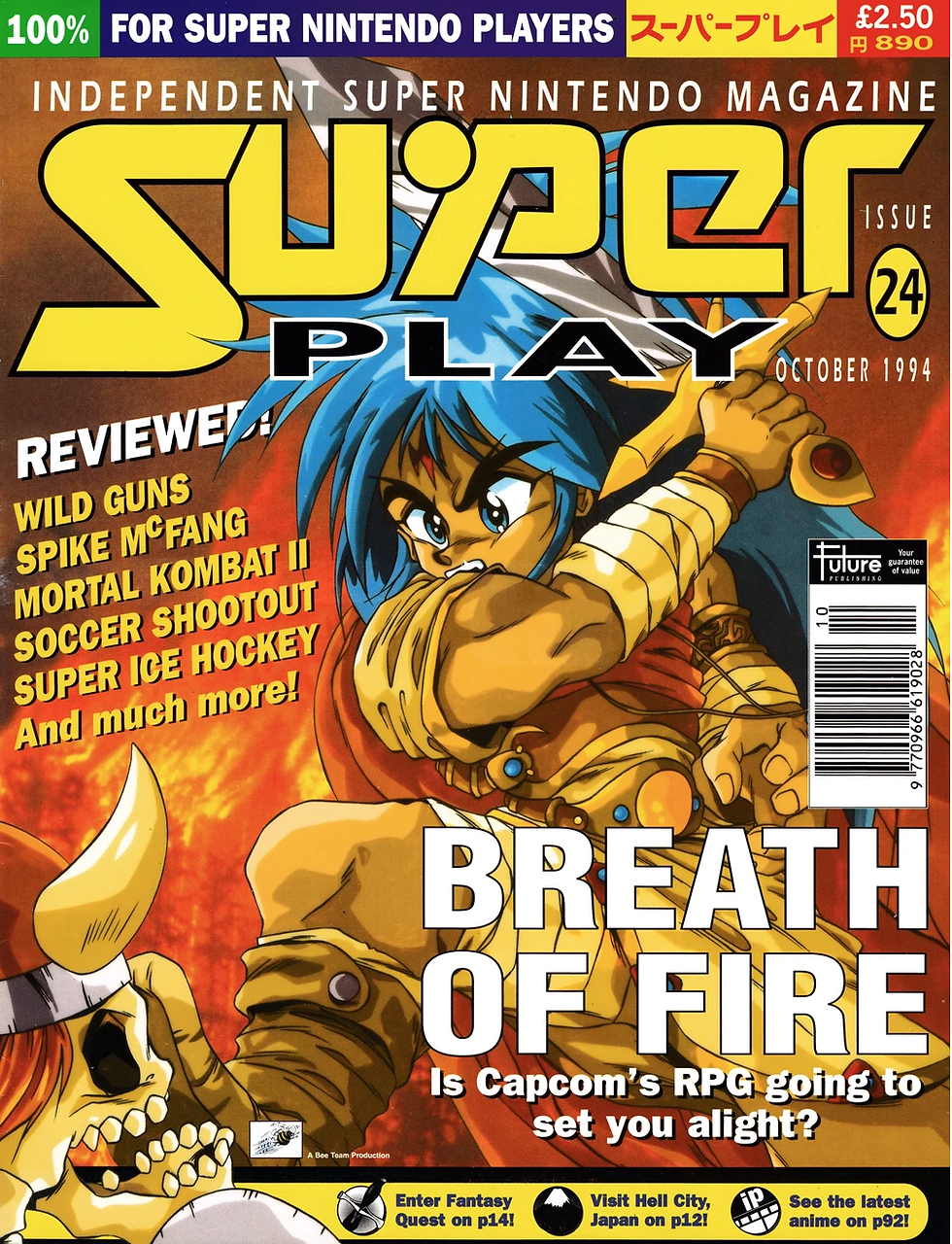
Super Play had two elements that worked for me. Nintendo Gaming and Anime! Featuring the excellent artistic talents of Will Overton and more in-depth features on Japanese import gaming than any other magazine at the time, it always pushed a unique look and tone. Helen McCarthy, founder of Anime UK and various other publications, was a regular contributor as well. My personal favourite cover featured Ryu from Breath of Fire and influenced my eventual purchasing of Breath of Fire 3 on PS1 years later.
N64:

During Nintendo's dark period, N64 magazine was a breath of fresh air. The successor to Super Play, I was not into the official Nintendo magazine (NMS) at the time as it had become a little biased and desperate for my tastes. n64, for the most part, was honest, passionate and incredibly funny. The many volatile reviews of games such as Superman 64 and Clayfighter were immensely enjoyable. On a more positive note seeing the first screenshots of Ocarina of Time and Perfect Dark were revelations. They also included guides to some of my favorite games on n64 such as Quake 2, Turok Rage Wars and Star Wars Episode 1: Pod Racer. Will Overton’s art continued to be featured as well.
EDGE:

How can you not mention Edge? The only magazine on this list to still be on the shelves with its integrity intact. Its original, unified tone, writer-influenced columns and articles and harsh rating system were really forward-thinking in the 90s. The rating system, in particular, has become as coveted as Famitsu’s 40/40 system, with the small selection of games to receive perfect scores becoming famous for just that. Many magazine styles and formats have been copied over the years, including the majority of the officially licensed publications, but none have ever come close to the effective tone of Edge. Some would say it is far too corporate for its own good, and maybe that is somewhat true but it was also refreshing for a magazine to take video games seriously.
SNES Force:
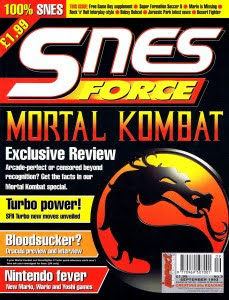
SNES Force was only available for a few issues. I’m sure I bought it because of some cover-mounted cards, possibly Street Fighter or Mortal Kombat. However, it featured the only competition I have ever entered and won in my whole life!
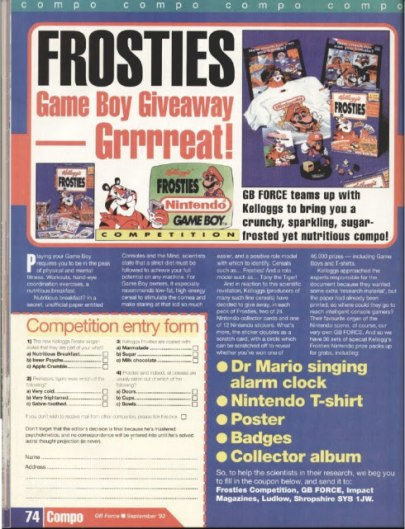
I wouldn’t go as far as saying it was a true victory, just look at the questions. I still have that Mario alarm clock on my shelf fifteen years later, though.
Digitiser:
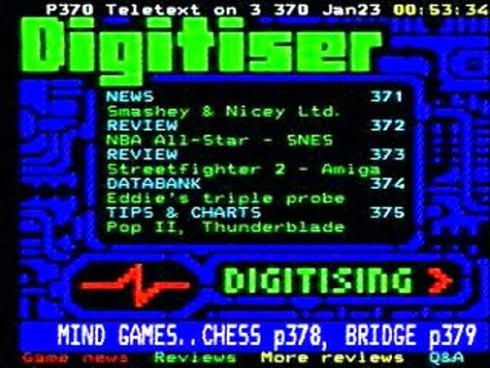
Now here is a real guilty pleasure. It saddens me that Teletext has been forgotten forever, a poor man’s pre-internet and a relic of bygone technology. In an unpoliced landscape, Paul Rose otherwise none by his Digi-moniker of Mr. Biffo, set out to write the world's first daily games magazine purely for the sake of free games. Years later, with the development of surreal humour and characters, Digitiser had 1.5 million regular readers. Paul continues to write on his blog Digitiser 2000, and produces a YouTube channel and a Digitiser television show (kinda).
Retro Gamer:
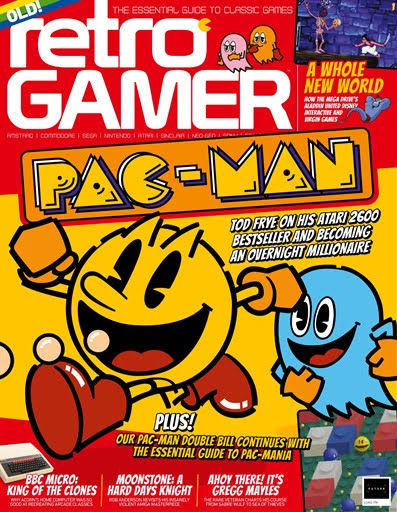
Not a classic gaming magazine in the strict sense of this article, but well, you know what I mean. Passionate, well-written and full of varying articles, Retro Gamer is the bible for modern enthusiasts.
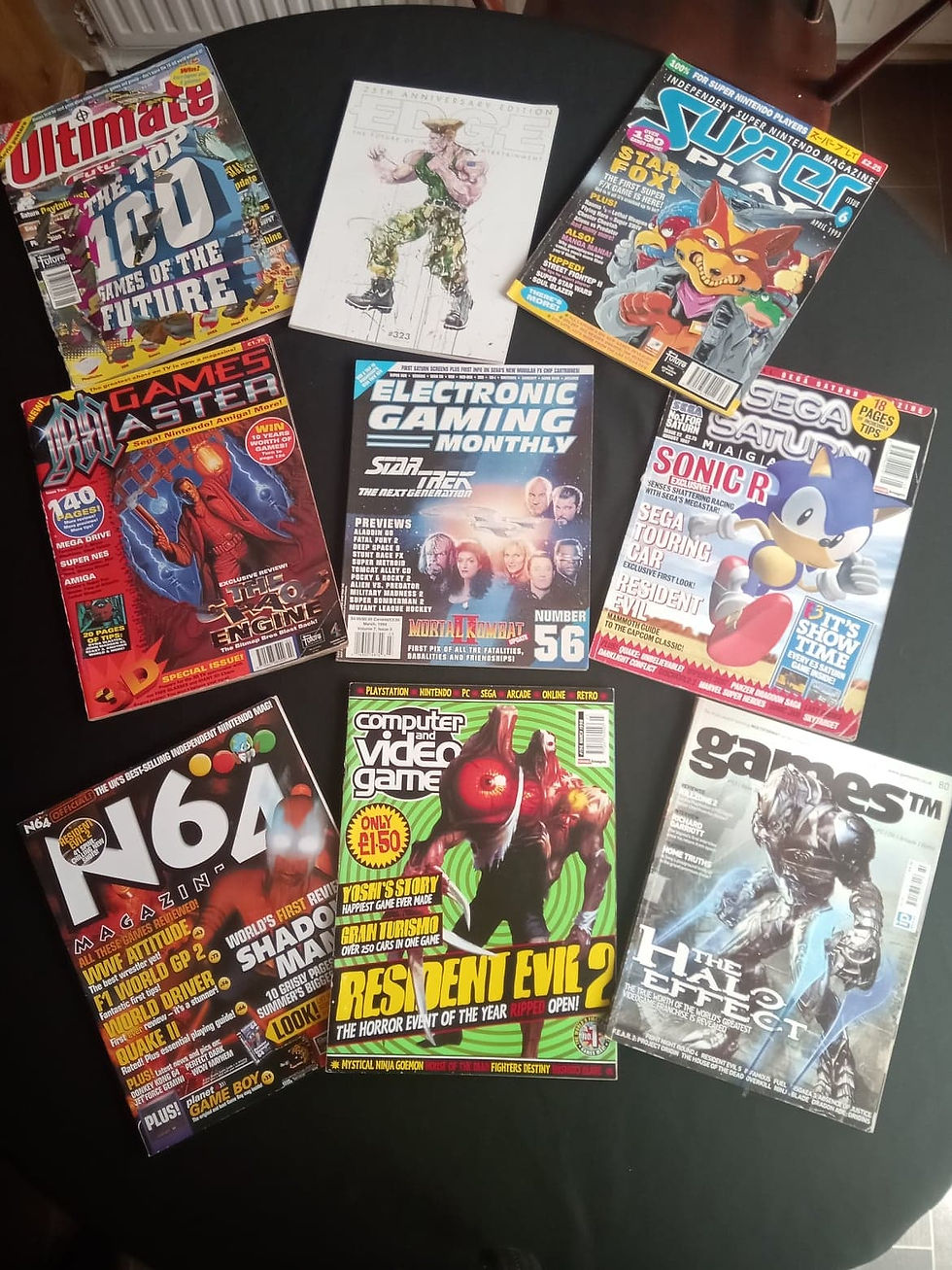
It's a shame that print media has all but died with very few magazines surviving to this day thanks to the rise of the internet. It's a form of media that I have always loved and forever will indulge in. To this day I still buy Retro Gamer because I think great writing is worth paying for and often when I remember a random magazine that I used to read, I'll go straight on to eBay looking for a copy to buy. I've greatly enjoyed this little trip down memory lane so look out for future articles, maybe covering more magazines or going in-depth on select issues.
Thanks for reading.




Comments